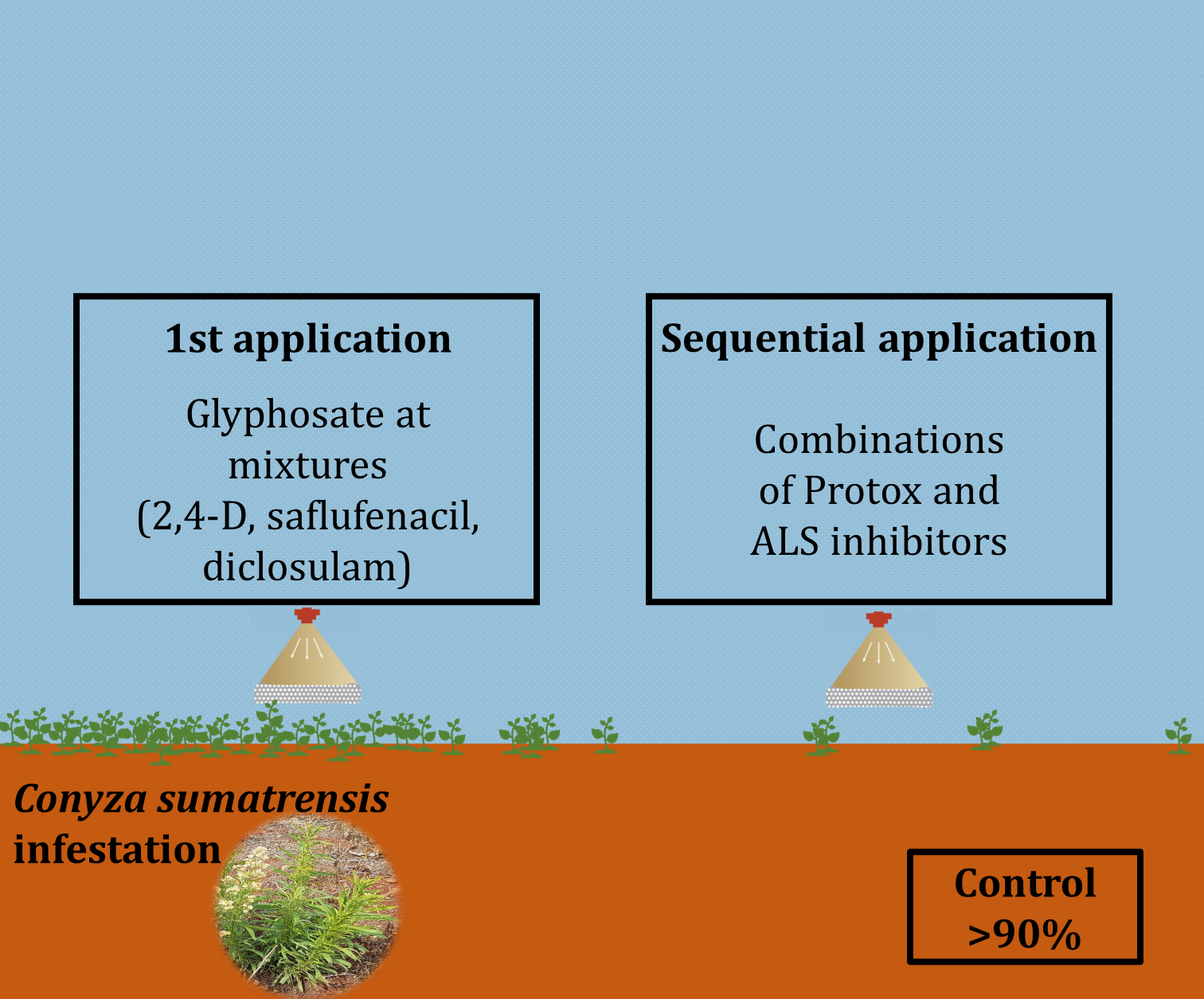Sequential application of herbicide options for controlling Conyza sumatrensis in soybean pre-sowing
DOI:
https://doi.org/10.48162/rev.39.085Keywords:
ALS inhibitors, Glycine max, PROTOX inhibitors, sumatran fleabane, weedsAbstract

The aim of this study was to evaluate the efficacy of sequentially applied herbicides to control Conyza sumatrensis, one of the most widely distributed weeds worldwide, in soybean pre-sowing burndown. The study was conducted under field conditions in the state of Paraná, Brazil, at 2018-2019 growing season. The experiment consisted of a randomized block design with four replicates, with 12 treatments consisting of different herbicide mixtures applied before sowing. Control of C. sumatrensis, injury to soybean plants, and variables related to agronomic performance were evaluated. The control levels were high for all treatments, except for the one that was free of saflufenacil in either of the two applications. These results highlight the importance of saflufenacil in the control of C. sumatrensis and show promise for the use of saflufenacil/imazethapyr when considering the system and other weeds. All studied treatments were selective to soybean, which showed higher injury values in the presence of diclosulam; however, this did not compromise the agronomic performance of soybean.
Highlights
• Application of systemic herbicides with sequential application of burndown herbicides, is essential for the control of Conyza sumatrensis (>15 cm height).
• Saflufenacil, flumioxazin, and imazethapyr stand out in the control of Conyza sumatrensis.
• Protox and ALS inhibitors can replace paraquat in sequential application with equal efficacy in the control of Conyza sumatrensis.
Downloads

Downloads
Published
How to Cite
Issue
Section
License
Copyright (c) 2018 Revista de la Facultad de Ciencias Agrarias UNCuyo

This work is licensed under a Creative Commons Attribution-NonCommercial-ShareAlike 3.0 Unported License.
Aquellos autores/as que tengan publicaciones con esta revista, aceptan las Políticas Editoriales.










.jpg)




